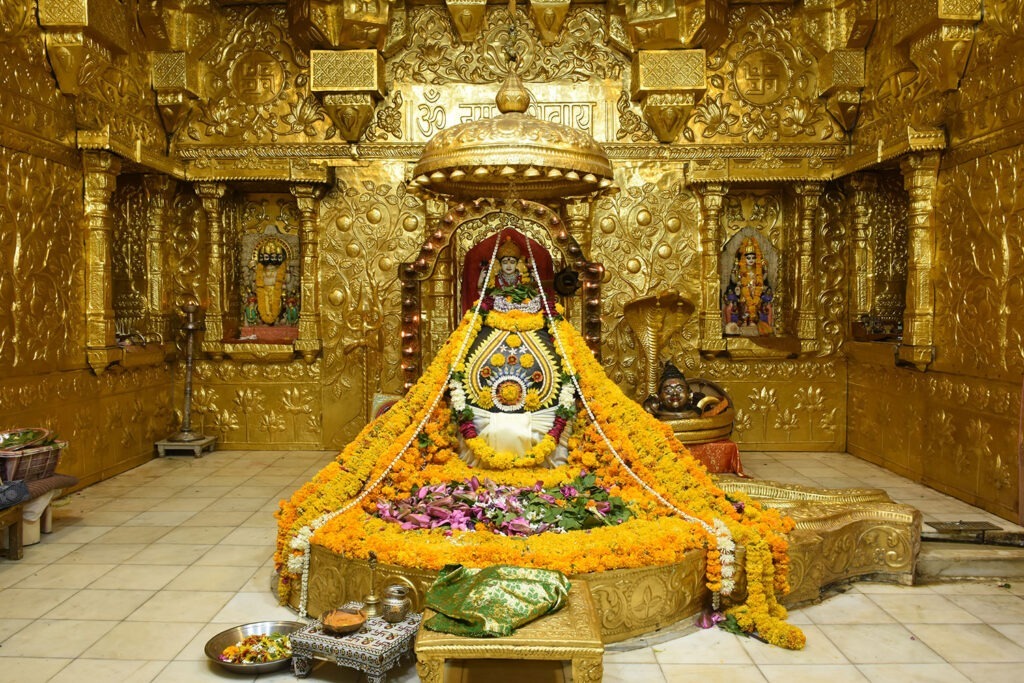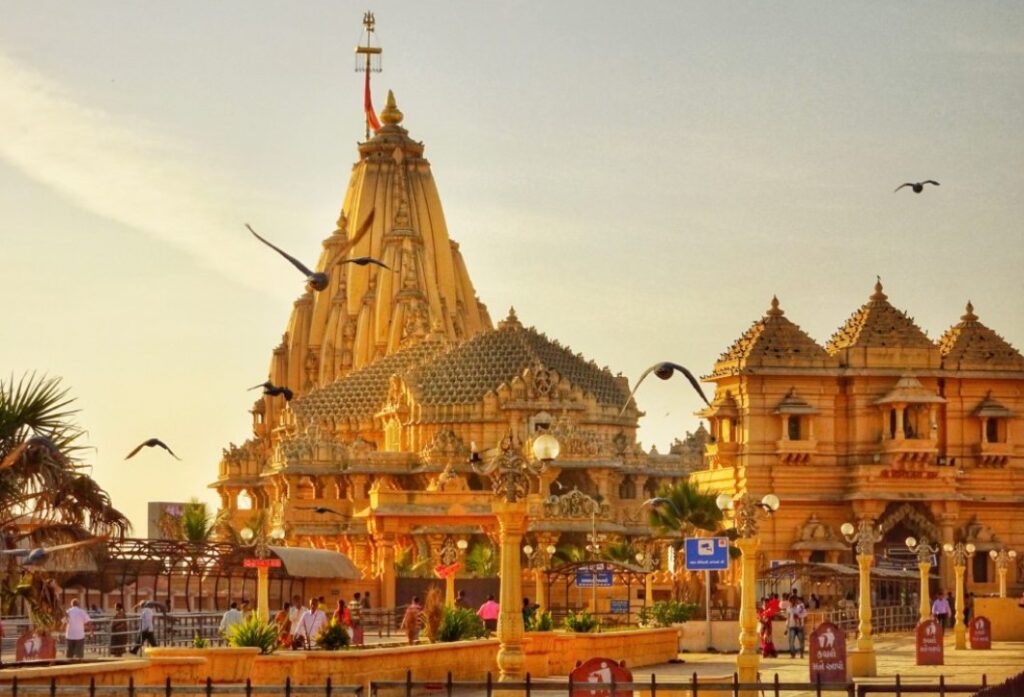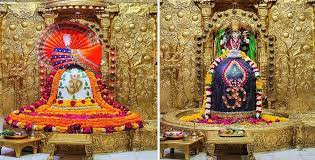
Shree Somnath Jyotirling Temple
Shree Somnath Jyotirling Temple, nestled in Prabhas Patan near Veraval in Saurashtra, Gujarat, stands as a monumental symbol of spiritual devotion and architectural grandeur. Revered as the first among the twelve Jyotirlingas dedicated to Lord Shiva. The temple’s seafront location, overlooking the Arabian Sea, adds a unique dimension to the spiritual experience, creating a serene ambiance where devotees engage in prayers, rituals, and aarti to seek the divine blessings of Lord Shiva. Shree Somnath Jyotirling Temple remains a sacred pilgrimage site, drawing pilgrims and tourists alike who are captivated by its historical significance, spiritual atmosphere, and the breathtaking confluence of land and sea.
Namaste 🙏 नमस्ते
Secure your visit • अपनी यात्रा सुरक्षित करें
Historical background and Architectural splendor
This temple has a long and turbulent history, as it was destroyed and rebuilt several times by various invaders and rulers. However, one of the most fascinating aspects of the temple is the legend of the levitating Jyotirlinga, or the idol of Shiva, that was said to float in mid-air without any support.
The architectural splendor of Shree Somnath is a testament to the cultural and artistic brilliance of ancient India. The temple’s design, marked by intricate details and timeless craftsmanship, includes an imposing shikhara and the Nandi mandapa, blending spiritual symbolism with aesthetic elegance. The structural elements not only convey the temple’s religious significance but also embody the resilience and cultural heritage of the region. The serene surroundings and seafront location by the Arabian Sea further enhance the temple’s allure, creating an atmosphere where history, spirituality, and architectural grandeur converge to offer a unique and enriching experience for pilgrims and admirers alike.

Religious Significance
It's the first of twelve Jyotirlingas, which represent the great power of Lord Shiva. People believe that visiting Somnath is like going on a special journey to connect with God and receive blessings. The temple has a long history of being destroyed and rebuilt, showing how strong people's faith in Lord Shiva is.
When people pray and perform rituals at Somnath, they feel a strong connection with God, finding comfort and peace. The temple is located by the Arabian Sea, making it even more special and serene. Many people visit this sacred place to experience the spiritual energy and take part in the rituals that have been happening for a very long time. It's a way for people to show their devotion and connect with the rich cultural and religious heritage of the region.

Festival and Celebrations
Here the festivals celebrated are Maha Shivaratri, Girnar Parikrama, Shravan Month, Navratri, Bhavnath Fair and Diwali.

Surroundings area & attractions
- Triveni Sangam: A sacred confluence of three rivers – Saraswati, Kapila, and Hiran, offering a serene environment for devotees and pilgrims.
- Bhalka Tirth: The site where Lord Krishna is believed to have been hit by an arrow, adding historical and mythological significance to the pilgrimage.
- Gita Mandir: A temple dedicated to Lord Krishna, featuring verses from the Bhagavad Gita on its walls, providing a spiritual and educational experience.
- Surya Mandir: : A sun temple dedicated to the worship of the sun god, providing another spiritual site for visitors.
Notable Events and Incidents
- Reconstruction of temple by Vallabhbhai Patel: On May 11, 1951.
- Integration with Sardar Patel's Statue of Unity:31 October 2018
- Regular Pilgrimage and Festivals: Every year the temple attracts millions of pilgrims on festivals like Maha Shivaratri are celebrated with great fervor.
Connectivity :
- By Air: The nearest airport is Diu Airport (75 km) and Porbandar Airport (122 km). Both airports are well-connected to major cities in India.
- By Rail: Veraval Railway Station, approximately 6 km away, is the nearest railway station. It connects to various cities across the country.
- By Road: The temple is easily accessible by road. Regular bus services and private transport options connect Veraval to nearby towns and cities. It's well-connected to major highways.
FAQs
Somnath Temple is located in Prabhas Patan, near Veraval, in the Gir Somnath district of Gujarat.
Somnath is the first Jyotirlinga of Lord Shiva and holds immense spiritual and historical significance.
Yes, Somnath is revered as the first of the 12 Jyotirlingas of Lord Shiva.
Darshan is generally available from 6:00 AM to 9:00 PM, with multiple aartis throughout the day.
Major aartis include:
Mangala Aarti – Morning
Madhyan Aarti – Afternoon
Sandhya Aarti – Evening
(Timings may vary slightly by season)
No, entry and darshan are completely free for all devotees.
Generally, Somnath Temple follows free darshan for all. Special darshan options may be available on select occasions.
The best time is October to March, when the weather is pleasant for darshan and sightseeing.
Major festivals include:
Mahashivratri
Shravan Month
Kartik Purnima
Diwali
Yes, the temple remains open with special night-long prayers and extended darshan.
No, mobile phones, cameras, smart watches, and electronic devices are not allowed inside the temple premises.
Photography and videography are strictly prohibited inside the temple.
Yes, locker and cloakroom facilities are available near the temple entrance.
Yes, accommodation is available through Somnath Trust guest houses, hotels, and dharamshalas nearby.
By Train: Veraval Railway Station (closest)
By Road: Well-connected by buses and taxis
By Air: Diu Airport (nearest)
Yes, the temple is well-managed and suitable for all age groups.
Yes, people of all faiths are allowed to visit respectfully.
It represents the infinite pillar of light (Jyoti) and symbolizes Lord Shiva’s eternal presence.
Yes, devotees can receive prasad from authorized counters within the temple complex.
Yes, it is often included in Dwarka–Somnath–Nageshwar Jyotirlinga tours.
Visitor information
Entry Fee: No fee
Darshan Days- All days
Address:
